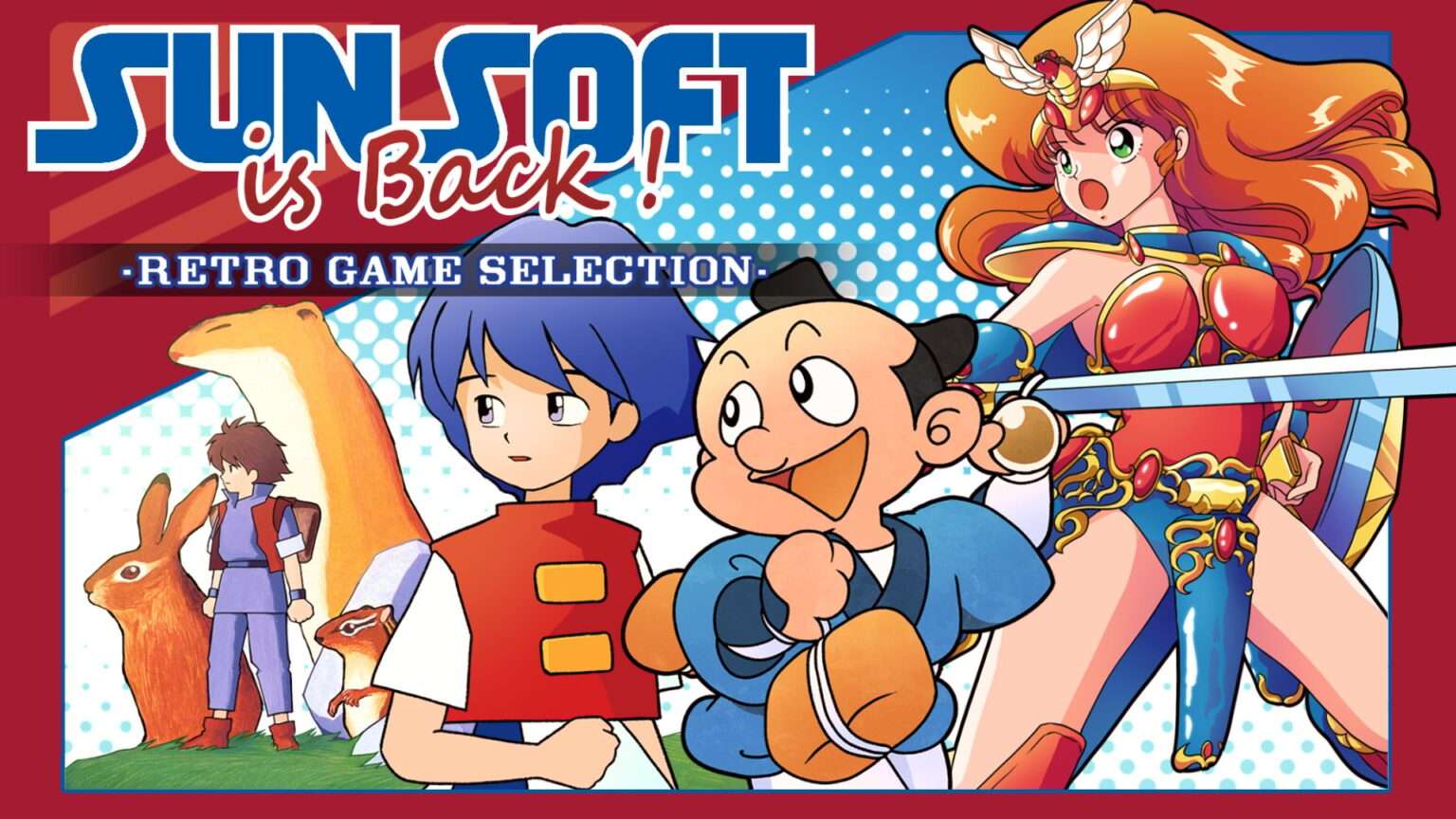This SUNSOFT is Back! Retro Game Selection review is based on the Steam (PC) version of the game. It is also released on: Nintendo Switch, XBox Series S/X and PlayStation 5.
The re-introduction of older games has become rather popular over the last few years. Be it through virtual consoles, game compilations or whole systems: retro games are cool and people buy them! So it’s no surprise more companies are digging out some old content, polish it up a little and give their old classics renewed life. Let’s see how SUNSOFT handles this endeavor in their SUNSOFT is Back! Retro Game Selection!
Many will have fond memories of SUNSOFT, they have made many classics for the arcades, home consoles and handhelds. Especially NES owners will likely have already yelled out a few titles that stood out on the system and their chiptunes still find themselves into many top 10’s out there. They’ve recently made a bit of a resurgence in the video game scene with some new releases, but are also here to celebrate their old classics.
SUNSOFT originals
Now SUNSOFT is a Japanese company and while they have brought many amazing titles to the West, there are FAR more that never saw a release outside of Japan. This compilation boasts three of their Famicom games, completely localized for the first time. Though, two out of the three are perfectly playable in Japanese as well. If you prefer, you can still play them in their original language as well.
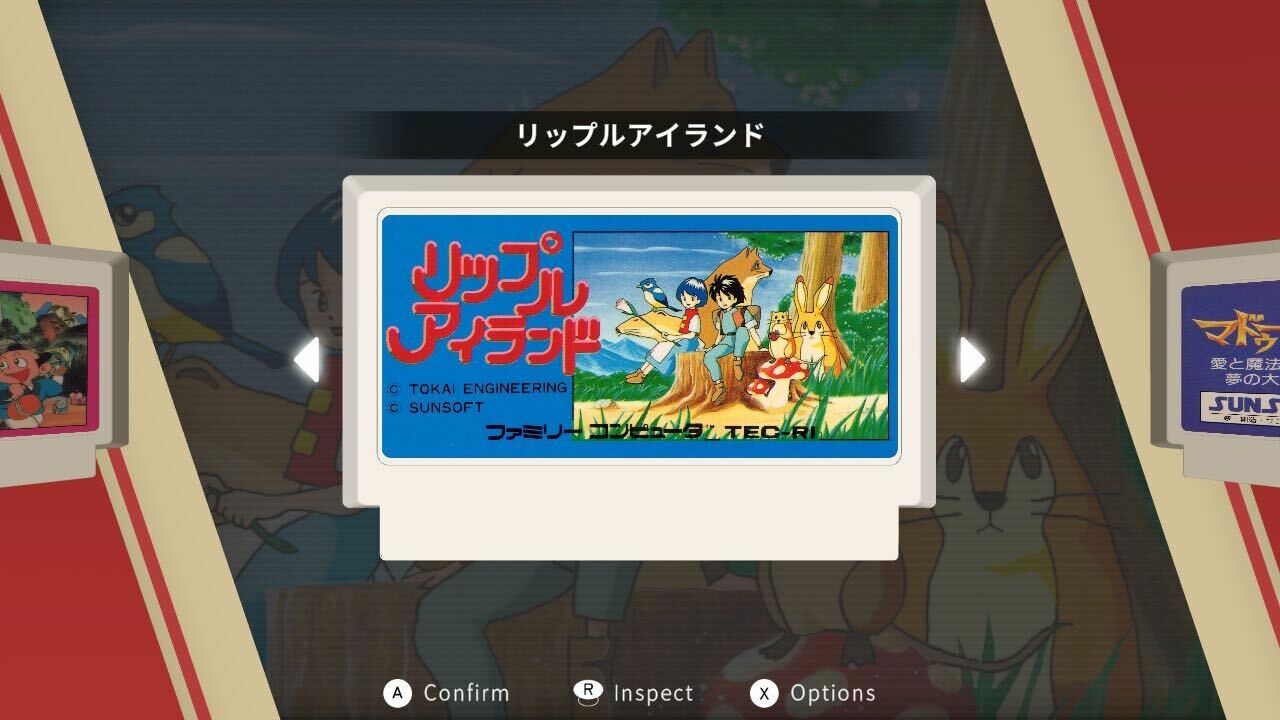
Famicon carts
The pack opens up in a simple selection screen where the three Famicom carts are featured. They are actually displayed in 3D and can be freely inspected, which is a nice touch. The overall options are basic, but to the point and the emulation seems spot on. You can set your resolution, aspect ratio and filter options to fit the games to your own satisfaction.
Each game also offers a gallery with some artwork. Once a game is running, you can also bring up the manual, but sadly these are not translated to English. It’s nice to have clear scan, but unless you know Japanese, they won’t tell you how to actually play the games. The safe states and rewind feature do help in this regard.
Much needed helping hand
Those may sound cheap, but next to those fine tunes from yesteryears, some flashbacks of SUNSOFT’s notorious difficultly may have also flooded back in! Remember Blaster Master and Journey to Silius? Or who could forget the killing joke that was the final boss of Batman? Well, those games were made at a point where SUNSOFT had learned to tone down the difficulty! These were earlier titles, so prepare for some tough challenges. But how about we take a look at each of the games now?

Firework Thrower Kantaro’s 53 Stations of the Tokaido
The earliest of the three is a charming, yet frustrating early Famicom platformer. In it you play as Kantaro who’s just completed his firework making studies in Kyoto as he travels to his fiancé Momoko in Edo (now Tokyo). He must have been taught some important and valuable secrets, as the evil merchant Gonzaemon has seemingly hired all the thugs in Japan to hunt him down!
The objective is simple, traverse 21 levels that see you travel along the historical Tōkaidō trade route. And for an early Famicom game released in 1986, the game really delivers on charm. Apparently it offers a historical interpretation of the route with some attention to detail. An interesting feat for a game from that time, though something that few will likely notice, especially nowadays.
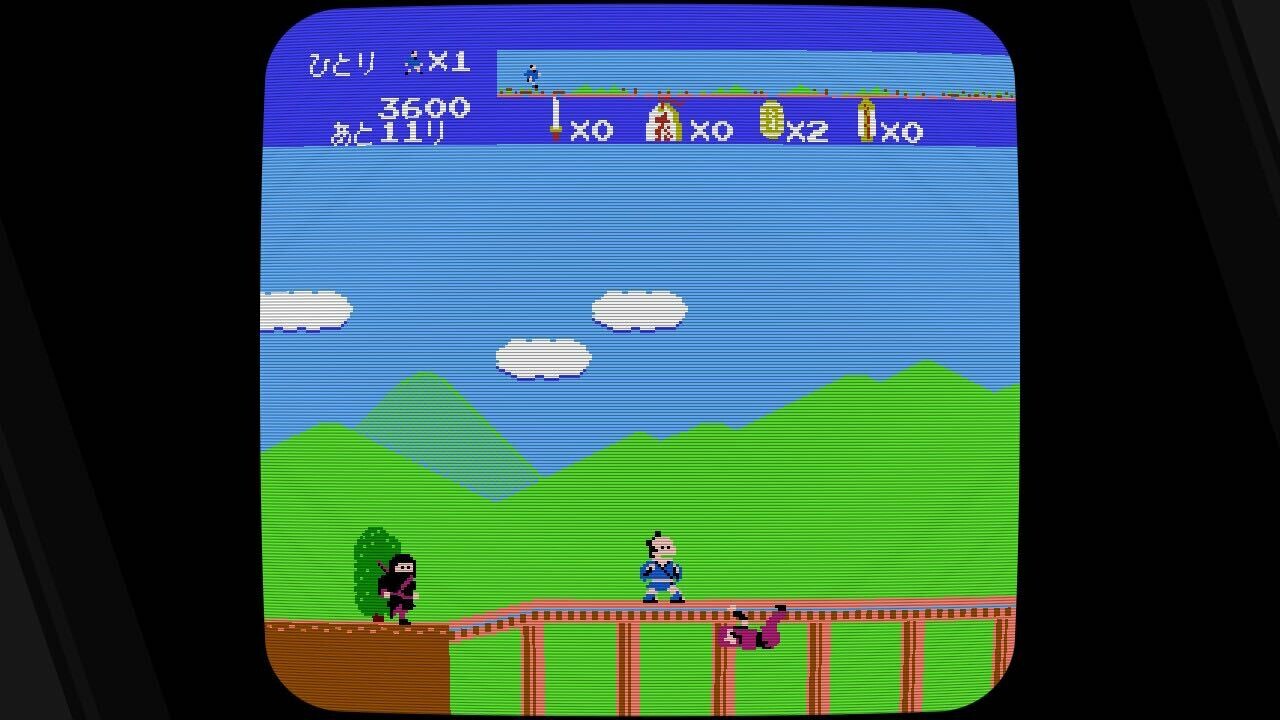
What is still easy to appreciate are the basic, but expressive graphics. All the unique enemy types look quite different and show a lot of character with their limited animations. Again, pretty impressive for an early Famicom game. Later games would blow this one out of the water when it comes to detail, but this one can hold its own when it comes to charm.
You will get to appreciate and no doubt hate these baddies a lot, as they are plentiful and relentless! You can get rid of them with some well thrown, or planted, fireworks. Unfortunately poor Kantaro forgot to learn to properly weaponize his tools, as he throws the stuff with an arc that’s also affected by momentum of his running speed. It’s quite unwieldly and any hit will cost you a life and there are no continues. Later levels throw multiple different enemy types at you at once and it quickly becomes extremely hard to get through!
There are items to help you out, but they are hidden and you need to throw fireworks everywhere in hopes to reveal them. Most of these have no direct effect. Instead they get rid of a certain nuisance. For example, the katana will get rid of the thieves that chase you down and steal all your items. Did I say the game is hard? Good luck getting through this one without cheating!
The Wing of Madoola
This action adventure was originally released at the tail end of 1986 and it’s interesting to see the evolution of SUNSOFT’s game design after the first game. This was the first project to bring together some prominent minds at the company, such as Kenji Sada and Naoki Kodaka, which would later lead to memorable classics such as Blaster Master. Unfortunately, it was still a bit early, and it results in a game that’s a bit too rough in execution to fully enjoy.
The game revolves around the statue of the Wing of Madoola, which grants ultimate power and has, of course, fallen into the wrong hands. So it’s up to Lucia to set out and set things right! And yes, a female protagonist, which was a bit of a trend at the time in Japan. She’ll have to traverse 16 levels, which start out linear, but quickly turn into bigger mazes with lots of nooks to explore and dreadful dead ends to waste your time with.

Somewhere in each level you’ll find a boss guarding a crystal ball, which is required to open the door to the next level. But there’s many other doors to find housing upgrades, which is the only way for Lucia to get stronger. It’s pretty easy to miss some of these and you’ll quickly feel outmatched if you happen to miss a few crucial upgrades such as attack power or health.
Lucia starts out extremely weak, where even the first enemies will take many hits. Luckily you’ll find a sword and boot upgrades very quickly, which provide an actual fighting chance. Still, her seemingly impressive 1,000 starting HP gets dwindled down extremely fast to a game over. Enemies love to spawn at nauseum and while you can stun lock most mooks, this only works on one at a time. This becomes very frustrating, as enemies love to bunch up.
Later on you find some magic abilities, some of which quite powerful, but using these costs MP. So it’s probably best to save this resource for the bosses. Recovery is hard to come by after all. There are some rare healing fountains, some items provide a bit of healing and technically speaking enemies can drop potions, but most seem to have forgotten to pack when they left home, as this rarely happens.
The one saving grace the game has, is that it has a somewhat hidden way to continue by keeping select pressed down when pressing start on the title screen. Now this was nothing new, but what is quite unique is that the continue screen allows you to go back to earlier stages. So if you fear you’ve missed something somewhere, you can go back to obtain it and you won’t have to deal with the bosses again. Items you did take, will still be gone though.
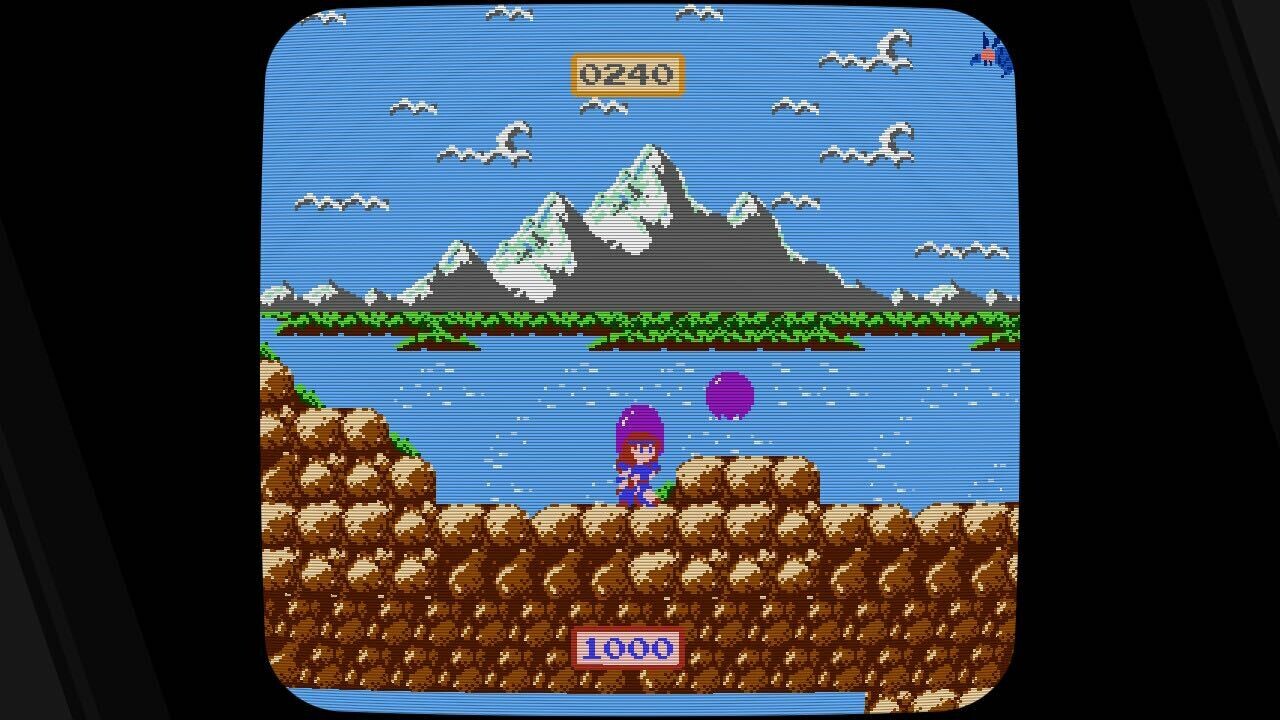
I really wish I would like the game more, but I find myself frustrated more than actually enjoying it. The presentation Is serviceable and for its time good, but you’ll be spending so much time looking for stuff, or just trying to survive until the next level, that especially the music gets too repetitive.
Ripple Island
Being an adventure game from 1988, I didn’t have much hope for enjoying this one. But it turned out that Ripple Island is the highlight of the pack for me! It’s a very charming point and click adventure with some well-crafted visual style and even some animations. SUNSOFT was really getting the hang of the NES’s sound chip at this time too, so the music is quite pleasant too. Being an adventure game, this is also the one game that benefits most from the added localization. While I can’t judge its accuracy, it came out well as it is and there was clearly effort put into creating a solid localization in which character quirks can exist.
The game takes place on the titular island, which has been taken over by the evil Groaker by invoking the power of a, once hidden, treasure. Kyle sets out to rid the land of this menace. On the island animals and humans live in harmony and you’ll run into quite a few quirky characters who’ll either help or thwart your progress.
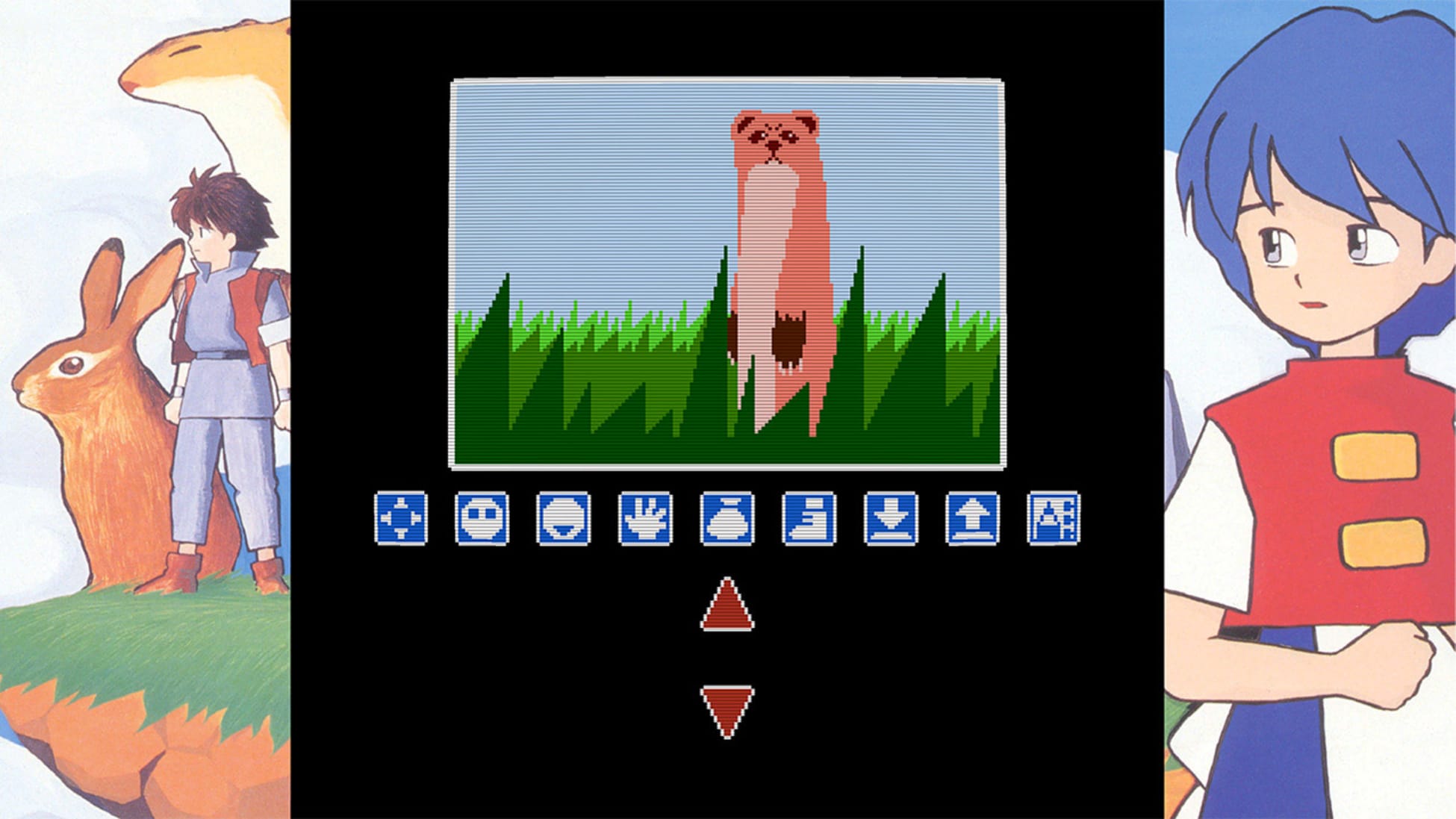
There are familiar verb actions, like move, take, talk, push and so on, represented by a row of icons. For some you’ll need to point to the area of the screen you want to use it on. Most screens only have one or two things going on at a maximum, so it’s quite manageable, though it’s not always made clear which screens are important or have something hidden. Especially the second area has you hitting random bushes and trees in the hopes of finding something to help you progress.
Which leads me to my biggest issue with the game. It’s not so much that things are hidden and you need to poke around a little. No, it’s the fact that the actual goals poorly communicated. Perhaps the manual does give some hints, but without being able to read it, it was quite hard to figure out what I could or could not actually do or what the objective even were in each area.
Still, the game’s five areas are small enough to not make this a huge issue, just try a few things until something cute happens. The game in total is short, but what is quite interesting is that the game does have a few different endings. Most based on decision points that come up twice, but one item that’s easily missable also effects the outcome slightly.
Ripple Island kind of saves the compilation for me. Whist all three of the games are interesting in their own right, it does feel like a rather meager package compared to similar products from other publishers. The added features do help take away some of the frustrations of the games and it does seem some resources have been spend on a quality translation.
I would have loved to see at least one familiar game to truly infuse some nostalgia for the Western market. A compilation with three rather poorly aged games from the 80’s is a hard sell. I personally appreciate being introduced to games I’ve never experienced and found a deeper appreciation for the rich history of SUNSOFT. I’ve really grown fond to Ripple Island in particular. For enjoyment however, it can’t compete with the company’s first cartridge on Evercade.
Pros
- Games well translated
- Emulation works well
Cons
- Just three games
- Frustratingly 'old' tough
- Nowhere near SUNSOFT's best works


